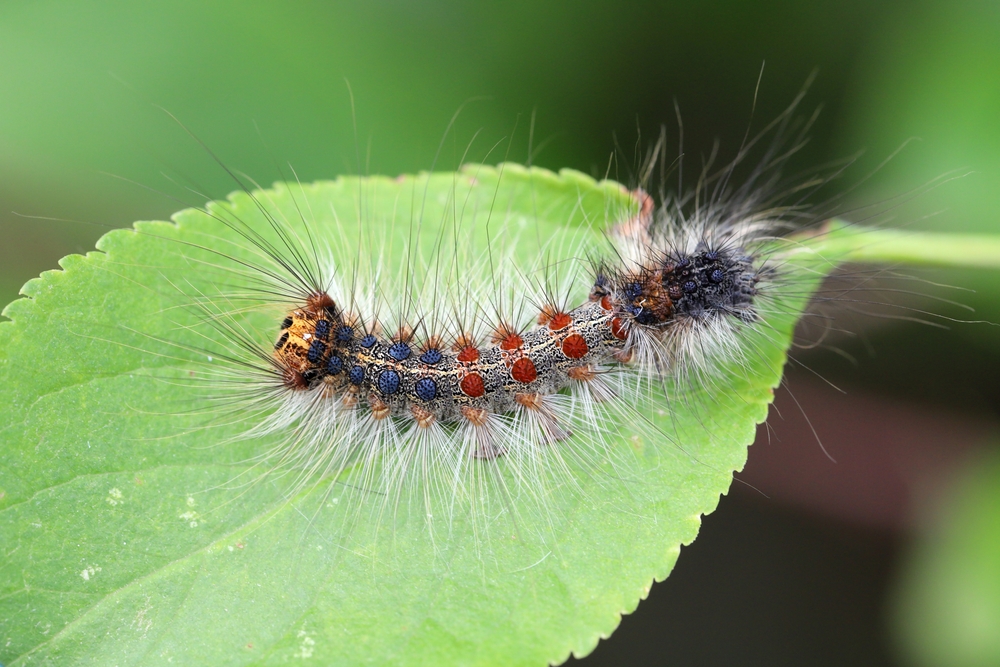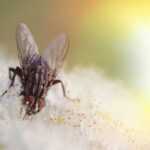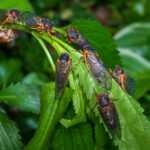The Essential Guide to the Moth Caterpillar
Discover how to identify moth caterpillars and explore their life cycle with fascinating facts. Enhance your knowledge and dive in today!
Moth Caterpillar: How to Identify & Understand Them
Wondering what a moth caterpillar is and how to spot one? Moth caterpillars represent the larval stage of moths and butterflies, showcasing various colors and patterns. This article helps you identify them and understand their life cycle, including how they resemble other species and their role as important eating machines in the ecosystem.
- Moth caterpillars undergo complete metamorphosis, feeding and growing as larvae before transforming into adult moths, with distinct life stages tied to specific host plants and habitats.
- You can identify moth caterpillars by observing their unique colors, patterns, body segmentation, and behaviors. Many species are nocturnal and adapt to specific habitats and food sources for survival.
- Conservation efforts for moth caterpillars include creating habitats that are friendly to them, using native plants, and avoiding the use of harmful pesticides, which support their populations and ecological roles as a vital food source for birds and other animals.
What is a moth caterpillar?
Moth caterpillars form the larval stage of moths, playing a crucial role in their life cycle. Unlike butterfly caterpillars, which people often celebrate for their beauty, moth caterpillars can be equally fascinating with their diverse forms, colors, and behaviors.
These caterpillars feed voraciously on a variety of food plants and grow rapidly, preparing for their transformation into adult moths through a process called complete metamorphosis, which includes the cocoon or pupal stage.
Life cycle of moths and butterflies
The life cycle of moths and butterflies amazes nature enthusiasts, beginning with the egg stage. Female moths lay eggs on host plants, which serve as the food source for the emerging caterpillars. Once hatched, these tiny larvae start their journey of growth and development. The larval stage, during which caterpillars spend most of their time feeding, can last several weeks to several months, depending on the species and environmental conditions.
During their time as caterpillars, they undergo significant growth, often molting five times to accommodate their increasing size. Each molt reveals a slightly larger and differently patterned caterpillar. These molts play a crucial role as they allow the caterpillar to grow in size and complexity.
Caterpillars exhibit a variety of colors and patterns, which species often display specifically. The Oak eggar caterpillar, for instance, changes from a bluish hue in late summer to a large, furry appearance in spring. This variation in appearance does more than impress; it helps them blend into their surroundings, resembling twigs or leaves to avoid predators.
Many caterpillars rely on specific host plants for nourishment. These plants provide the necessary nutrients for caterpillars to thrive and eventually pupate in cocoons. Caterpillars also use overwintering as a survival strategy, hiding in tree bark, under leaves, or in old logs to survive cold and disturbed conditions.
Common characteristics
Moth caterpillars often display distinct color patterns and body segmentation, which help camouflage them against predators. These patterns range from bright, warning colors to subtle hues that blend into foliage. For instance, the Cinnabar caterpillar shows bold black and yellow stripes.
Many caterpillars possess hairs or spines, which deter predators from making them a meal. The Garden tiger caterpillar, for example, features a hairy body with striking black and ginger coloration. These hairs make them less palatable or even dangerous by irritating potential predators.
Body segmentation also serves as a key feature, with most caterpillars showing clear divisions between their segments. This segmentation not only aids in movement but also helps identify different species. The Knot grass caterpillar, with its black body adorned with red spots and white dashes, exemplifies how body segmentation and coloration work together for survival.
These common characteristics prove vital for identifying moth caterpillars in the wild. Observing their colors, patterns, and body structures helps distinguish between different species and understand their unique adaptations.
Identifying common moth caterpillars
Identifying moth caterpillars plays a crucial role in understanding local biodiversity and ecology. When trying to identify these fascinating creatures, observe their size, color patterns, habitat, and feeding habits. Each species displays unique characteristics that make it stand out.
Here are some common moth caterpillars you might encounter, including photos to aid identification.
Drinker moth
Drinker moth caterpillars grow up to 7 cm long and have a dark grey appearance with golden speckles and brown hair tufts along their body. They remain active from August to June and typically inhabit damp habitats.
Their dark coloration and golden spots make them quite distinctive.
Fox moth
The Fox moth caterpillar is hairy and can grow up to 7 cm long. They inhabit heathland and coastal grassland habitats, where their furry bodies help them blend into the environment.
Oak eggar
The Oak eggar caterpillar features a large furry body and intricate patterns, which make it identifiable among many species. These caterpillars remain active from August to June and occupy diverse habitats.
Garden tiger
Garden tiger moth caterpillars grow up to 6 cm long and feature a hairy body with a distinctive color pattern of black and ginger with long white hairs. They remain active from August to June and inhabit various habitats, like gardens and scrubby areas.
Various natural predators prey on these caterpillars.
Cinnabar
Cinnabar caterpillars display black and yellow stripes. They primarily feed on ragwort and typically inhabit grassy habitats.
These caterpillars remain active from July to September.
Elephant hawk-moth
Elephant hawk-moth caterpillars feature distinct eyespots and a spiky tail, which help identify them. They appear from June to September, often in gardens.
These unique features make the elephant hawk-moth caterpillar one of the most recognizable species.
Privet hawk-moth
Privet hawk-moth caterpillars display a chunky green body adorned with purple and white stripes. These caterpillars measure about 8.5 cm and appear from July to September.
Puss moth
Puss moth caterpillars are large, hairy, and highly distinctive in appearance. They feed on poplar and willow trees and appear from June to September.
Mullein
Mullein caterpillars feature a distinctive whitish appearance marked with yellow splodges and black spots.
These caterpillars usually inhabit gardens.
Yellow-tail
The yellow-tail caterpillar features a black body with greyish-white hairs and prominent red lines. They inhabit scrub habitats from August to June.
Brown-tail
Brown-tail caterpillars appear hairy and black with red spots. They build webs and inhabit scrubby habitats from August to May.
Their hairs can cause skin irritation and pose dangers to humans.
Knot grass
Knot grass caterpillars remain active from June to October and feature black coloration, brown hairs, and distinctive red spots and white dashes.
They inhabit diverse habitats.
Peacock
Peacock caterpillars display black coloration with spines and can grow up to 4.5 cm in length. They commonly inhabit nettles, which serve as their primary host plant.
Vapourer
Vapourer caterpillars feature grey and black coloration along with prominent yellow tufts. They remain active from May to September.
Pale Tussock
The Pale Tussock caterpillar stands out with its bright green color, black bands, and distinct yellow tufts. These caterpillars often appear on deciduous trees from June to October.
Food plants and habitats
Understanding the food plants and habitats of moth caterpillars proves essential for their conservation. Different species of moth caterpillars rely on specific host plants that provide nutrients during their growth phase. Native trees, such as oaks, willows, cherries, and birch, support hundreds of caterpillar species.
Moth caterpillars thrive in diverse environments, including gardens, heathlands, and scrubby areas. Wild areas such as roadsides and undergrowth also provide essential habitats rich in food sources for caterpillars.
Host plants
Different species of moth caterpillars depend on specific host plants that provide essential nutrients during their growth phase. Common host plants for various moth caterpillars include ragwort, willows, and buddleia. Planting native trees plays a critical role in caterpillar support, as certain species host hundreds of Lepidoptera types.
Incorporate a variety of native perennials as host plants for moth caterpillar larvae. Using diverse plant species in your garden provides essential food sources for different caterpillar species.
Habitats
Moth caterpillars inhabit diverse environments such as gardens, heathlands, and wild areas with native vegetation. The Drinker moth caterpillar, for example, inhabits damp environments and appears most frequently during the warmer months. These varied habitats remain critical for the survival and development of caterpillars, providing food sources and protection from predators.
Incorporate a variety of native plants in gardens to promote a diverse ecosystem beneficial for moth caterpillars. Wild areas like roadsides and undergrowth also provide essential habitats rich in food sources for caterpillars. By preserving and enhancing these habitats, we support the growth and survival of moth caterpillars.
Predators and threats
Moth caterpillars face numerous threats from predators and environmental challenges. Birds, other insects, and human activities significantly impact their populations. Understanding these threats proves crucial for developing strategies to protect caterpillars and maintain ecological balance.
Birds
Many bird species rely on caterpillars as a primary food source, particularly during the nesting period, due to their high protein content. Birds such as the Tennessee Warbler and Red-eyed Vireo consume large quantities of caterpillars, making them an essential part of their diet. Certain birds, like the Yellow-billed and Black-billed Cuckoos, even eat hairy caterpillars, demonstrating their adaptability in prey selection.
The decline in moth populations may correlate with reductions in bird species that depend on them for food, indicating a potential ecological imbalance. Nestling birds consume caterpillars in vast numbers, with some species capable of eating thousands within a few weeks. This highlights the critical role caterpillars play in the diet of many birds and the broader ecosystem.
Other insects
Insects such as ants and predatory beetles actively hunt and consume caterpillars, posing a significant threat to their populations. For example, ants actively hunt caterpillars, impacting their survival rates. Additionally, the hairs of Brown-tail caterpillars cause skin irritation, providing a natural defense mechanism against some predators.
Employ natural pest control methods to protect caterpillar populations from harmful chemicals. Encouraging predatory insects helps control caterpillar populations without resorting to chemical pesticides, which can have unintended negative effects on the environment.
Human impact
Human activities, such as pesticide use and habitat destruction, pose significant threats to moth caterpillars. Natural pesticides like Bt, while marketed as environmentally friendly, can inadvertently harm caterpillars. Maintaining plant health through cultural practices helps control unwanted insects without the need for chemical pesticides.
Using natural pest control methods instead of chemicals significantly protects moth caterpillars from harmful substances. Adopting sustainable gardening practices reduces the negative impact on caterpillar populations and supports their role in the ecosystem.
How to help moth caterpillars
Supporting moth caterpillars involves creating friendly habitats and avoiding harmful pesticides. By understanding their needs and making small changes in our gardening practices, we can contribute to their survival and well-being.
Creating friendly habitats plays a vital role in supporting moth caterpillar populations. Leaving fallen leaves and plant debris in gardens provides vital overwintering habitats for moth caterpillars. These natural materials offer shelter and protection, helping caterpillars survive harsh conditions.
Planting a variety of native plants supports the growth of caterpillar populations. Native plants serve as host plants and provide essential food sources for caterpillars. Enhancing gardens with native flora creates environments that cater to the needs of these important insects.
Avoiding pesticides
Use pesticides sparingly and only when necessary, as many caterpillars respond well to natural control methods. Natural pest control alternatives, such as encouraging predatory insects, help maintain a healthy balance in the garden without harming caterpillars.
Avoiding chemical pesticides remains crucial for the survival of moth caterpillars. By adopting natural pest control methods and focusing on maintaining plant health, we create a safer environment for these essential creatures.
Understanding and supporting moth caterpillars proves essential for maintaining biodiversity and ecological balance. By identifying common species, recognizing their food plants and habitats, and mitigating threats from predators and human activities, we can contribute to their survival. Creating friendly habitats and avoiding harmful pesticides provide practical steps to help these fascinating creatures thrive. Together, we ensure a healthier environment for moth caterpillars and the wildlife that depends on them.
Frequently Asked Questions
Do all caterpillars turn into butterflies?
Not all caterpillars turn into butterflies; some develop into moths. Regardless, all caterpillars undergo the same four life stages: egg, larva, pupa (cocoon), and adult.
Are moth caterpillars safe to touch?
Caterpillars generally remain safe to touch, but some, like the saddleback and flannel moth caterpillars, can be venomous and cause irritation. Exercise caution and avoid handling unfamiliar species.
What is the moth caterpillar?
The moth caterpillar represents the larval stage of a moth, forming the second phase in its four-stage life cycle, which includes egg, larva, pupa (cocoon), and adult. As they develop, moth caterpillars can exhibit significant variations in appearance.
How can I identify different moth caterpillars?
To identify different moth caterpillars, pay attention to their size, color patterns, body segmentation, habitat, and feeding habits. These characteristics help distinguish between species.
What are common host plants for moth caterpillars?
Common host plants for moth caterpillars include ragwort, willows, and buddleia. These plants provide essential food sources for their development.



